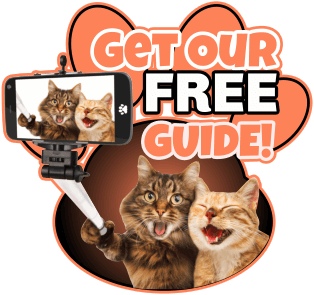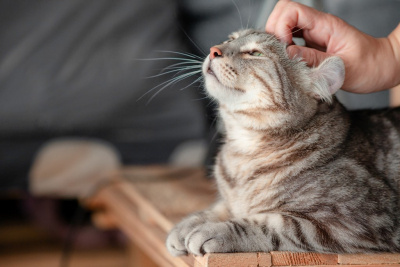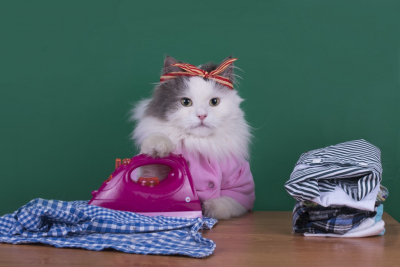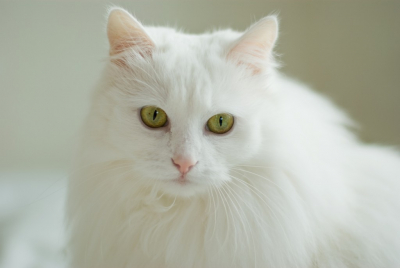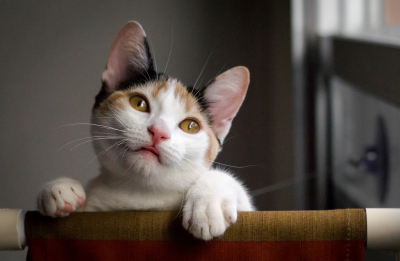The majority of cat owners feed their pets dry food. It’s cheap, readily available, and often assumed as the best choice. Plus, it stores longer and doesn’t require special keeping, other than airtight storage if you don’t want it to go stale. Of course, you do still want to think about nutrition and what is going to be best for your cat, whether that’s dry food or not. Before you go making any decisions, check out our guide.
To start with, you’ll want to look at the brand reputation and quality above all else. This will automatically let you know which foods are likely to be more nutritious. They are going to cost a little bit more, but that will be worth the money. Besides listening to the experts, though, how do you go about getting the best and most nutritious cat food? Here’s what you need to know.
Our Favorite Brands
When it comes to nutrition and getting more for your money, we have a few favorites that have established themselves as leaders in the pet food industry. Each has its pros and cons, as well as different options for wet and dry food, but you’ll ensure that your cat is eating better food when you choose these brands.
- BLUE Wilderness: BLUE uses a unique process for making their cat food, which is always grain-free and packed with nutrients. They create food using cold-forming, which helps avoid excess heat that often destroys valuable nutrients. The goal is to provide high-quality food that resembles their wild, natural diet more realistically.
- Hill’s Science Diet: For years, Hill’s has been a leader in nutrition for cats and dogs. The brand focuses on creating unique formulas for specific ages, stages, and conditions in a cat’s life to ensure that they always get the ideal nutrition, regardless of their needs. This brand is also one that has many prescription formulas available for those cats that need something a little extra.
- Purina ONE: Specifically, this brand has a Urinary Tract formula that is great for indoor adult cats. Urinary tract health issues are common in adult cats and having the right food can help prevent them. This formula is more affordable than the other brands discussed here, too, making it a good choice for those who want something better than grocery-quality, but without the high price of high-end cat food.
- Rachael Ray Nutrish: This cat food line is known for the famous face behind it, but Ray commits to helping give cats and dogs better nutritional options. Plus, most of the profits from the line go to charities through the Rachael Ray Foundation, and there are plenty of proponents that will tell you this is one of the best dry cat foods that you can find. It’s available in salmon or chicken, too, giving your cat options and variety. Plus, it’s another more affordable brand.
What Makes Cat Food “Healthy”?
The healthiest cat food mirrors your feline’s natural dietary needs. Cats are obligate carnivores, which means they require animal protein to thrive. High-quality cat food should:
- List a real meat source (like chicken, turkey, or salmon) as the first ingredient
- Contain minimal fillers (avoid corn, wheat, soy, and meat by-products)
- Provide essential nutrients like taurine, omega-3 fatty acids, and vitamins A, E, and D
Avoid ingredients such as:
- Meat “meal” (unless clearly defined, e.g., “chicken meal”)
- Artificial preservatives (BHA, BHT)
- Food dyes and artificial flavoring
Dry Food vs. Wet Food: Which is Healthier?
When choosing between dry and wet pet food, many pet owners wonder which option offers better nutrition. Both types have unique benefits, and the best choice often depends on your pet’s specific needs.
Dry food is convenient, affordable, and great for promoting dental health by reducing plaque buildup. It also has a longer shelf life and is easy to store. Many dogs and cats enjoy the crunchy texture, and it’s often used in puzzle feeders to encourage mental stimulation.
Wet food, on the other hand, contains higher moisture content, which helps with hydration—especially important for pets that don’t drink much water. It’s typically more palatable, making it ideal for picky eaters or pets with dental issues.
Nutritionally, both dry and wet foods can be healthy choices if they meet AAFCO standards and are made with quality ingredients. Consulting your veterinarian can help you determine the right balance or combination of dry and wet food based on your pet’s age, weight, and health status.
Should I Choose Grain-Free Cat Food?
Grain-free diets are popular, but they’re not necessary for every cat. While many grain-free foods are higher in protein and lower in carbs (a good thing), there’s no scientific consensus that grains are harmful unless your cat has an allergy.
Look for:
- Legitimate protein sources over high-carb fillers like potatoes or peas
- AAFCO-approved (Association of American Feed Control Officials) labels for nutritional adequacy
Pro Tip: Consult your vet before switching to grain-free, especially for senior cats or those with health conditions.
What About Prescription Cat Food?
Prescription cat food is specially formulated to help manage specific health conditions, such as kidney disease, diabetes, urinary issues, or food allergies. Unlike regular pet food, these diets are designed under veterinary guidance to support treatment plans and improve your cat’s quality of life. If your vet recommends a prescription diet, it’s essential to follow their advice closely—using the right food can make a big difference in managing chronic conditions. Always consult your veterinarian before making any changes to your cat’s diet, especially when health issues are involved.
What Ingredients Should You Avoid?
Here are red flags on cat food labels:
🚫 Corn, corn gluten meal
🚫 Meat by-products
🚫 “Animal” fat (unidentified source)
🚫 Artificial colors (Red 40, Yellow 5)
🚫 Sweeteners (cats don’t need sugar!)
Instead, look for:
✅ Named meat sources (e.g., chicken, turkey, salmon)
✅ Whole grains or veggies (brown rice, pumpkin)
✅ Probiotics and omega fatty acids
Cost vs. Nutrition: Finding the Balance
While premium foods may cost more, you feed less per serving due to higher nutrient density. Over time, a better diet can save you money on veterinary bills and health issues.
Compare value:
- 15 lb. bag of cheap food with fillers = more food needed
- 10 lb. bag of premium food = longer-lasting, more effective
Don’t fall for flashy packaging—read the ingredient list first!
How to Choose the Right Food for Your Cat
Start by considering your cat’s age, weight, activity level, and any medical conditions. Kittens, adult cats, and senior cats all have different nutritional needs, so be sure to choose a formula tailored to their life stage.
Next, always check the ingredient list on the label. Look for real meat as the first ingredient. Avoid fillers like corn and soy. And steer clear of artificial additives. If your cat has food allergies or sensitivities, you may need to explore grain-free or limited-ingredient options.
Consulting your veterinarian can also help you determine what’s best for your cat, especially if you’re unsure about specific ingredients or dietary needs. Keep in mind that the right cat food not only satisfies hunger. It promotes a long, healthy life.
Give Your Cat the Nutrition They Deserve
Every cat has different diet requirements, so take the time to understand their specific needs, age, and any health conditions they may have. When in doubt, consult your veterinarian to tailor the best diet for your feline friend. With the right food and a little extra care, you’ll help your cat live a longer, healthier, and more playful life.
Healthy cat food isn’t just a trend—it’s a commitment to your pet’s well-being.

